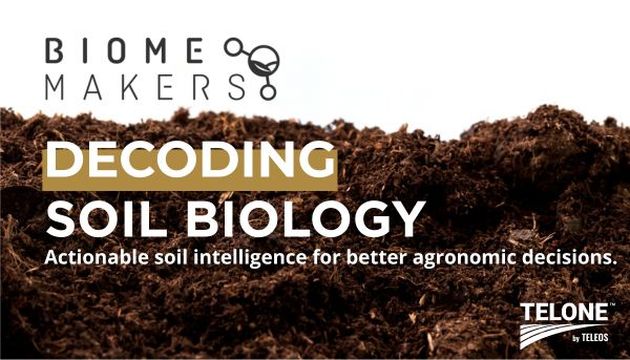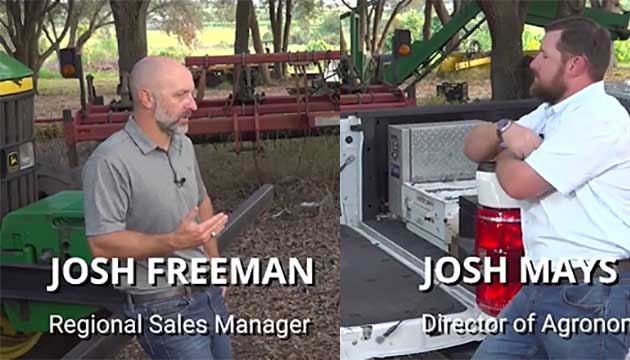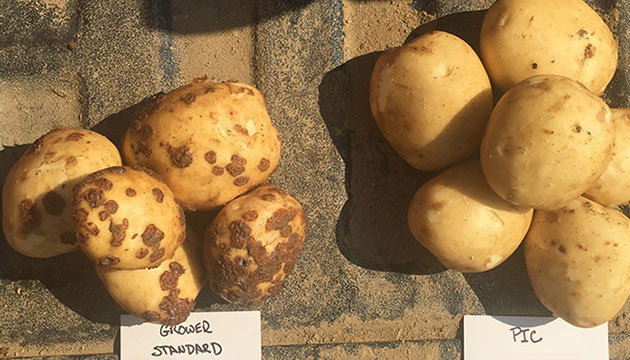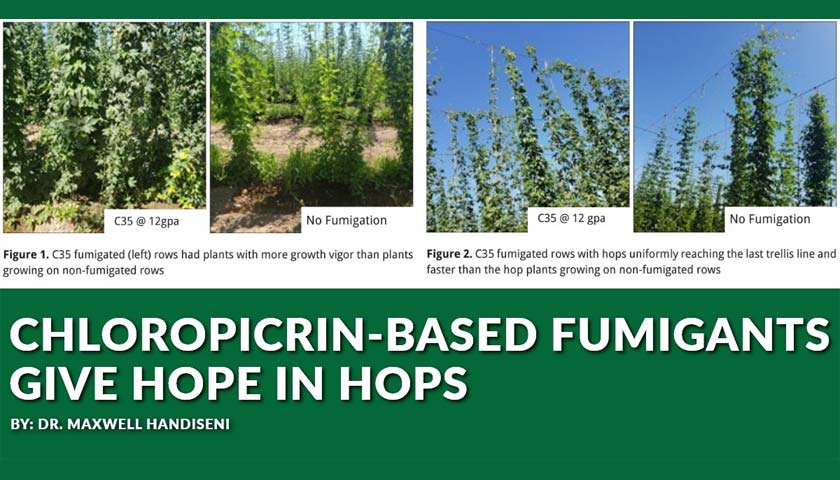Microbial Research

R&D has always been an important part of the work we do at Teleos. Each year we conduct numerous trials all around the world, testing efficacy, different rates, application methods, and more. Our latest trials center around understanding how TELONE™ by Teleos soil fumigant impacts the soil microbiome, upending decades of misconceptions that TELONE™ sterilizes the soil. That's why we’re excited to be collaborating with Biome Makers Inc. as they push soil science beyond traditional chemistry and into a new era of biological insight. Their BeCrop® technology uses advanced DNA sequencing, AI-driven microbiome analysis, and functional mapping to identify what soil microbes are present—and, more importantly, what they’re doing.
Read More

Collaborating with Biome Makers Inc.
R&D has always been an important part of the work we do at Teleos. Each year we conduct numerous trials all around the world, testing efficacy, different rates, application methods, and more. Our latest trials center around understanding how TELONE™ by Teleos soil fumigant impacts the soil microbiome, upending decades of misconceptions that TELONE™ sterilizes the soil. That's why we’re excited to be collaborating with Biome Makers Inc. as they push soil science beyond traditional chemistry and into a new era of biological insight. Their BeCrop® technology uses advanced DNA sequencing, AI-driven microbiome analysis, and functional mapping to identify what soil microbes are present—and, more importantly, what they’re doing.

TriCal Group Celebrates World Soil Day
World Soil Day (Dec. 5th) highlights the healthy soils and sustainable agriculture. TriCal Group delivers science-driven solutions that protect and enhance this critical resource. Today we recognize the growers, advisers, and partners who work every day to steward the soil for future generations.

Can a Soil Fumigant be used as a Biostimulant in Agriculture?
In the video "Can a Soil Fumigant be used as a Biostimulant in Agriculture?" we take a closer look at how conventional tools like soil fumigation can complement emerging microbiome-focused practices. At TriEst Ag Group, we view Chloropicrin as a catalyst—reducing pathogen levels and creating a clean slate for beneficial microbes to thrive. By combining proven chemistry with biological innovation, growers can build a stronger, more resilient production system.

Chloropicrin Fumigation and Biostimulants: A Promising Duo against Rhizoctonia Canker in Potatoes
A study from Frontiers in Soil Science has unveiled promising strategies to enhance potato yields and mitigate Rhizoctonia canker. Research from the IRDA and Université Laval in Québec chloropicrin soil fumigation as a biostimulant on potatoes.

Shifts in Microbial Communities following application of Chloropicrin and 1,3-Dichloropropene in Pineapple
Trical Group's John Washington released a paper on fumigation using Chloropicrin and 1,3-dichloropropene (1,3-D) and its impact on microbiological communities and soil health.

2024 Storkan-Hanes-McCaslin Research Foundation Award
TriCal Inc. is excited to announce the winners of the 2024 Storkan-Hanes-McCaslin Research Foundation Award! Join us in congratulating Sudha Upadhaya from Washington State University, Ram Neupane from Penn State University, and Corrie Vincent from Memorial University of Newfoundland.

Meister Media Worldwide's Annual Soil Health Report.
Meister Media Worldwide's Annual Soil Health Report is now available! Our very own Dr. Randy (RM) Huckaba was interviewed for the piece, sharing thoughts on how soil fumigation with TELONE™ can be a vital part of a sustainable pest management plan.

Do You Know (And Appreciate) the Hidden Heroes Beneath Our Feet?
One gram of soil can hold more than 50,000 species of microbes, all living, breathing, interacting and impacting our soil, land, and air. Swiss researcher Mark Anthony recently calculated that soil is home to 59% of Earth’s total life, the most biodiverse habitat on Earth!

Could A Soil Fumigant Be Used as a Bio-Stimulant?
A group of scientists at the University of Florida have been investigating the impact of soil fumigation on microbial communities and recently published some of their findings. They found that fumigant treatments with greater than 60% chloropicrin consistently increased tomato yield

The Unintended Limits of Organic Farming
“Organic has its place, but it’s really important to define what organic is — and what it isn’t — especially in the context of sustainable ag. Organic has rules and limits, but it doesn’t necessarily always translate to maximum actual regenerative impact.”

Chloropicrin-Based Fumigants Give Hope In Hops
The Pacific Northwest is known for producing hops that can be devastated by pathogens such as Rhizoctonia solani, Verticillium, Fusarium, and Alternaria. These pathogens can result in stunted growth, wilting and root decay which drastically impact plant growth and consequently hop yield and quality.

A High-tech Look Inside Soil’s Microbiome
Chad Hutchinson is pleased to discuss soil microbes and sustainability with Joy Youwakim, an agroecology scientist at Biome Makers, an independent, third-party genomics company that specializes in DNA sequencing of agricultural soil samples.

Managing the Good and the Bad of Soil Microorganisms
If you’ve farmed for several decades, you’ve seen firsthand the shift from broad spectrum to targeted pest management. Partially, the change has occurred because today’s available technologies are so vastly more precise than what our parents and grandparents used.

New Technology Provides First-Ever Snapshot of Fumigants’ Impact on Soil Health
Soil fumigation is highly effective at managing soil pests that cause crop disease. However, it is regularly accused of doing more harm than good to overall soil biology. Advances in genetic sequencing technology can now show how fumigation actually changes bacterial and fungal populations in agricultural soil, and the close-up look is surprising.
